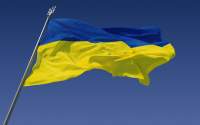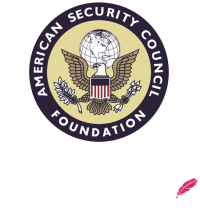Preparing for a Cold Peace in Ukraine

April 2024—After Russia’s full-scale invasion of Ukraine in 2022 (which brought nearly 25 percent of Ukraine under Russian control) and after Ukraine’s stunning counteroffensives (which clawed back 54 percent of Russian-occupied territory), some military experts are describing the war as stalemated. Even President Volodymyr Zelensky of Ukraine has conceded, “On all the main fronts, we need to dig in.” This stalemate could end one of four ways: 1) with Russia regaining the advantage and dictating terms, 2) with Ukraine breaking through Russia’s defenses and rolling back Russia’s occupying army, 3) with political changes in Moscow or Kiev reverberating on the battlefield, or 4) with both sides effectively exhausted and their multiple offensives culminated.
Given what Vladimir Putin has inflicted on the Ukrainian people—some 100,000 civilians killed, 58,000 war crimes committed, 700,000 children abducted and forcibly relocated, attacks on hospitals and places of worship, a systematic campaign of mass rape—no one could blame them for fighting on and holding out hope for that second scenario. Yet there are indications that we are edging toward that last scenario, with neither side able to secure its objectives. The combined effect of Ukraine’s tenacity and Russia’s military incompetence may make it difficult for Russia to budge the battlelines more than a few abandoned villages here and there. On the other hand, Russia’s sheer mass and Ukraine’s limitations may make it difficult for Ukraine—even with its motivated army of clever and tenacious warriors—to retake all of its pre-2014 territory.
If that’s the case, America and its NATO allies must be prepared to fortify postwar Ukraine—not only or even primarily to protect Ukraine from another Russian onslaught, but rather to promote what the North Atlantic Treaty calls the “stability…and…security of the North Atlantic area.”
Less than Ideal
First things first: America and the dozens of other Free World allies supporting Ukraine should follow Ukraine’s lead when it comes to the endpoint of this war. In other words, the Free World should help the Ukrainian people secure what they define as victory. At the moment, what they define as victory is encapsulated in Zelensky’s peace plan:
-International assistance in securing and managing Ukraine’s energy-production facilities,
-Russia’s agreement to cease attacks on food supplies,
-Release and return of all prisoners, including Ukrainian civilians,
-Recovery and reconstruction of Ukrainian land and infrastructure,
-Withdrawal of Russian troops from Ukraine,
-Security guarantees for Ukraine,
-Formal peace conference confirming the war’s end,
-Restoration of Ukraine’s territory to the 2014 borders (including Crimea and eastern Ukraine), and
-Creation of a special tribunal for the prosecution of Russian war crimes.
That would be a just peace—the sort of peace Ukraine deserves. However, short of being pushed out of Crimea by force, surrendering the resource-rich Donbas region and experiencing a table-turning revolution in Moscow, Russia won’t agree to at least three of those peace terms—specifically, the withdrawal of Russian troops from Ukraine, the restoration of Ukraine’s pre-2014 borders and territories, and the creation of a war-crimes tribunal.
Make no mistake: The Free World has the resources, if not the will, to enable Ukraine to realize every one of those terms. As retired U.S. Air Force Gen. Philip Breedlove (former military commander of NATO) explains, “This war is going to end exactly like Western policymakers want it to end…If we withdraw the funding from Ukraine, Ukraine will fight valiantly, tens of thousands of Ukrainians will die and Russia will subjugate Ukraine.” But Breedlove adds, “If we give Ukraine what they need to win, they’ll win.”
Short of some dramatic change in the West, especially in Washington, it’s unlikely that the U.S. and its allies will send the Ukrainian “what they need to win”—what’s necessary to liberate the whole of Ukraine. What seems most likely is that aid will continue to flow along its current trendlines—not so little as to trigger Ukraine’s collapse, but not enough to enable Ukraine to break through.
As the situation in eastern Ukraine takes on the characteristics of a defensive stalemate, as Russian-occupied Crimea (which weathered 184 Ukrainian attacks in 2023 alone) and even parts of Russia proper (Ukraine has struck as deep as St. Petersburg and the Baltic coast) are held at risk due to Ukrainian kamikaze-drone capabilities, and as the assets needed to retake territory dwindle, it’s possible the warring sides could stagger to some sort of compromise representing less than what Russia wants (the subjugation of all of Ukraine) and less than what Ukraine wants (the liberation of all of Ukraine). This would be less than ideal and less than just. In a broken world full of broken men, achieving the perfect is seldom possible. However, as it has in the past, the Free World could make such an imperfect peace sustainable.
Hopes
Even under these circumstances, even in a postwar situation characterized by something less than total victory, there are ways to provide security and to keep the peace—or at least to prevent another war. In short, what we may be heading toward along the Russia-Belarus-Ukraine frontier is a Cold War-style “peace.”
History reminds us that neither lingering territorial disputes nor simmering hostilities are dealbreakers when it comes to providing security to allies and partners in the crosshairs.
Consider post-World War II Germany. After an initial period of disarmament and occupation, the country’s western half was rearmed, renamed, reinvented and invited into the NATO alliance as a full member—all despite serious territorial disagreements and massive armies in close proximity to one another. In fact, the U.S. didn’t formally recognize the post-World War II territorial-political settlement in Germany and across Europe until 1975—30 years after the war’s end—and the people and government of West Germany didn’t abandon their hopes for the reunification of East and West Germany. Those hopes weren’t realized until 1989.
Consider post-World War II Japan. The Red Army seized Japanese islands at the end of World War II. To this day, Tokyo does not recognize Russian control over the four islands, which are known in Japan as the Northern Territories. Despite this territorial disagreement, the United States entered into a security treaty with Japan in 1951 and a full-fledged mutual defense treaty in 1960. That treaty is still in force today.
Consider the Korean Peninsula. Despite territorial disagreements, despite the absence of a full-fledged peace treaty, despite—or perhaps because of—the threat posed by a massive hostile army north of the 38th Parallel, the United States provided security guarantees to South Korea in the autumn of 1953. Those security guarantees are still in force. The people and government of South Korea, to this day, look forward to the full unification of the two Koreas under the banner of freedom. The ROK even has a cabinet-level government ministry focused on North-South unification.
Consider the Sinai Peninsula. In 1979, as Israel and Egypt edged toward peace, President Carter provided written assurances that the U.S. would support efforts to establish and maintain security in the Sinai. The byproduct of these assurances was the Multinational Force and Observers peacekeeping mission, which has been deployed in the Sinai Peninsula since 1981. President Reagan declared that “U.S. participation in this critical step will contribute to our broader efforts to bring about a just and lasting peace in the region.” Funded by a group of donor nations and manned by a group of troop-contributing nations, the MFO remains on duty to this day.
Importantly, in none of these examples did the U.S. or its partners agree to or legitimize the permanent partition or ceding of territory. Rather, they recognized the difficulty of liberating occupied territory. And they envisioned the future prospect of reunification of territory. “Peace does not mean Ukraine’s capitulation,” as French President Emmanuel Macron emphasizes.
These examples remind us that where there’s a will, there’s a way to defend sovereign nations from aggression, to keep the peace, to protect free nations in the crosshairs. Our next issue will explore what that might look like for postwar Ukraine.











